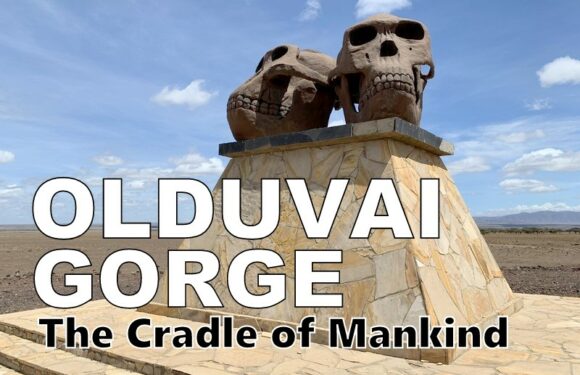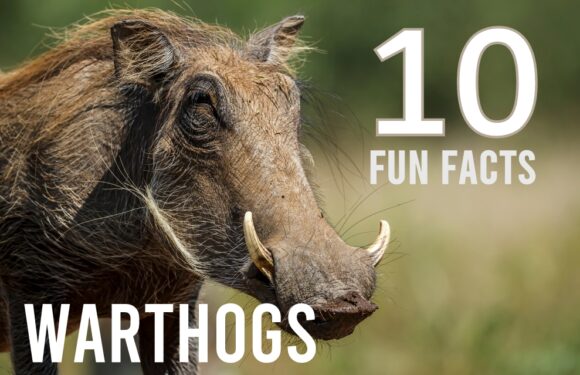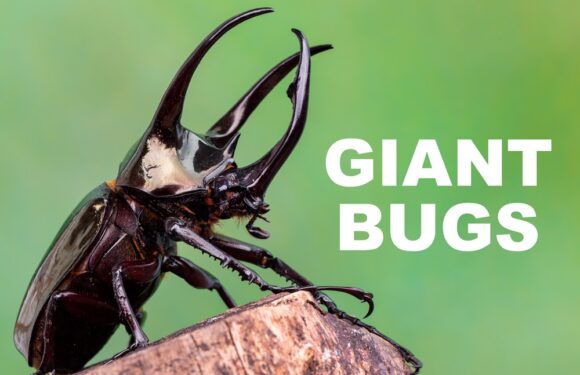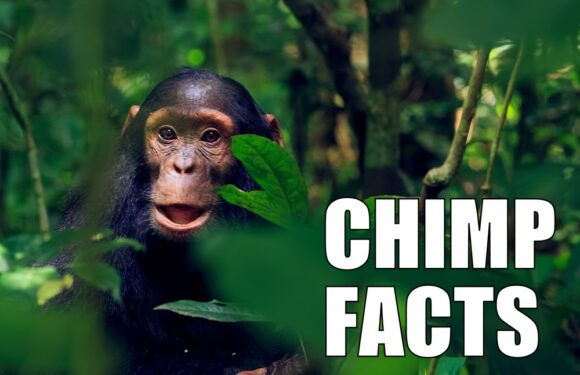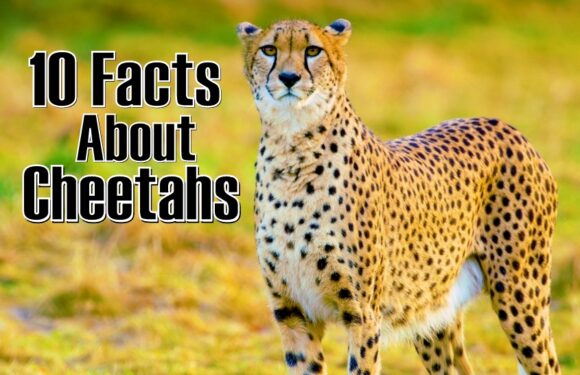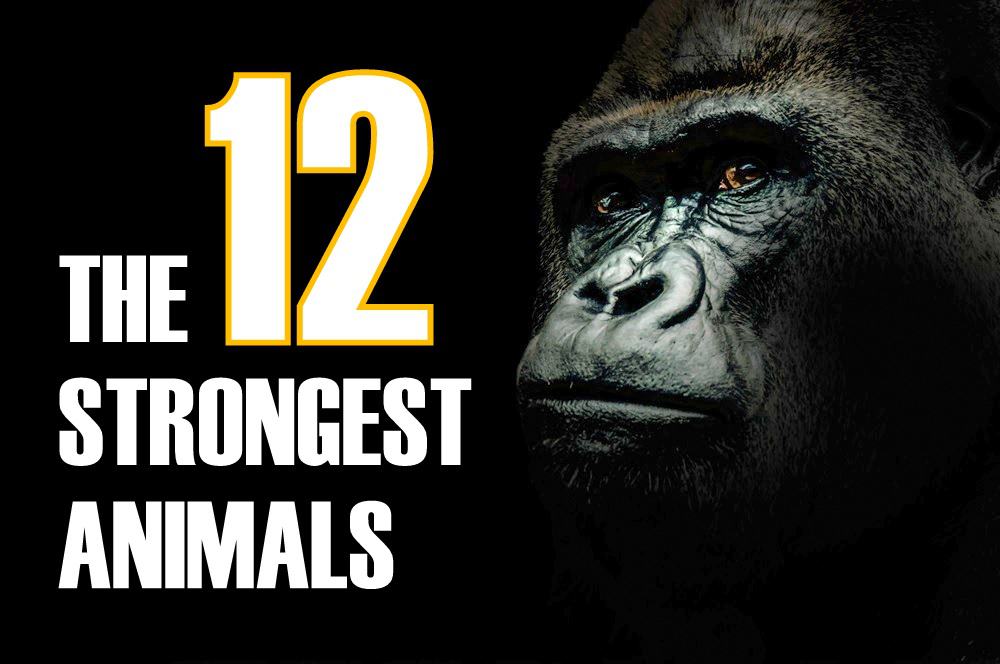
When we think of strength, images of muscle-bound athletes often come to mind. But in the animal kingdom, strength manifests in fascinating ways. This article explores the concept of strength in animals, first through sheer brute force and then in terms of strength relative to body size.
Prepare to be astounded by nature’s powerhouses!
Why Are Animals So Strong Compared to Humans?
Animals display remarkable strength compared to humans due to differences in muscle fiber composition and the mechanics of muscle operation.
Fast-Twitch Muscle Fibers
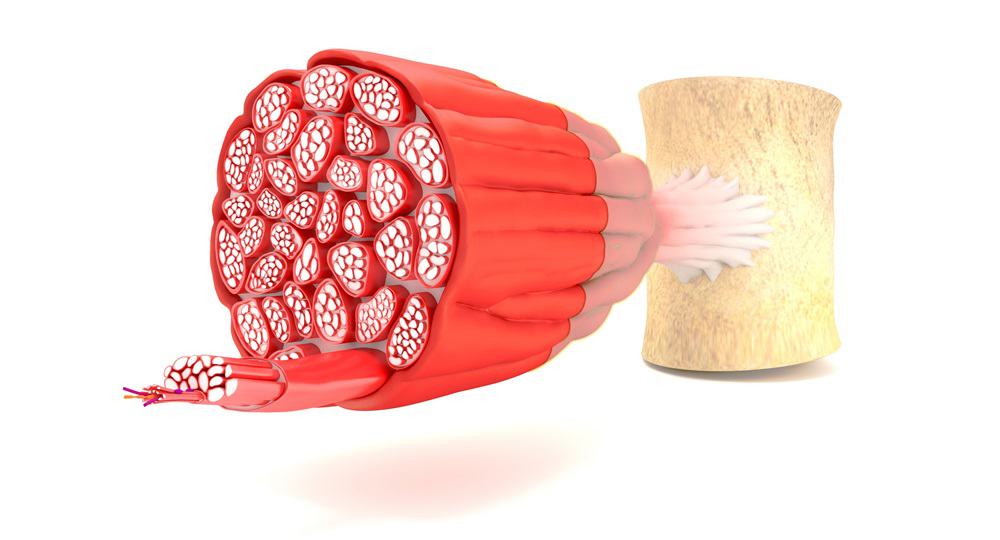
Animals, particularly those in the wild, tend to have a higher proportion of what are known as “fast-twitch” muscle fibers. These fibers are designed for explosive strength and speed but are not as efficient for endurance. Humans, on the other hand, have a more balanced mix of fast-twitch and “slow-twitch” muscle fibers, the latter being more suited for endurance and stamina. This difference is a result of evolutionary adaptations.
For example, a tiger’s muscles are adapted for incredible bursts of speed, whereas human muscles are tailored for long-distance endurance, a trait beneficial for persistence hunting.
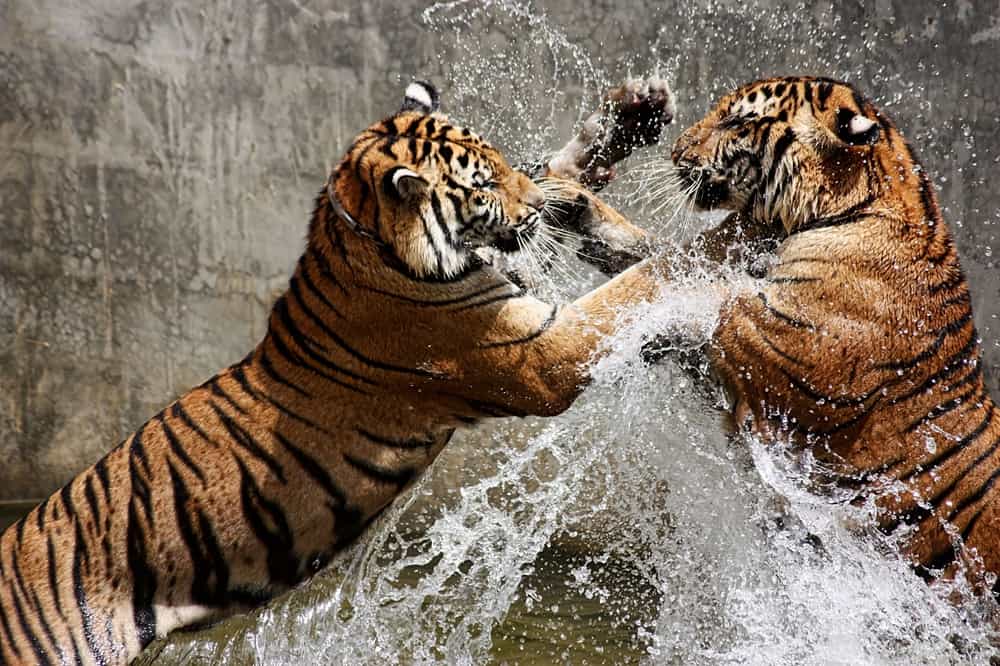
Better Muscle Mechanics
Another factor is the mechanics of how muscles are attached to the skeleton. Many animals have muscle attachments that are farther from joints, providing them with a greater mechanical advantage. This means they can generate more force per unit of muscle mass compared to humans.
For instance, a gorilla’s muscles are attached in a way that maximizes strength, allowing it to lift or pull weights that would be challenging for a human.
THE 12 STRONGEST ANIMALS IN THE WORLD
Here are the world’s strongest animals when it comes to brute strength.
1. African Elephant
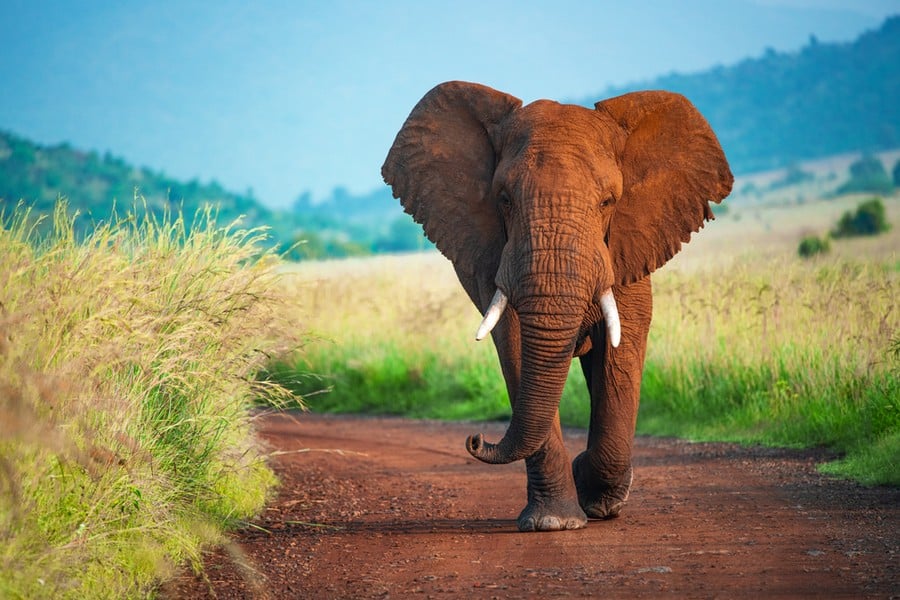
The African Elephant is the strongest animal in the world. As the largest land animal on Earth, these giants can weigh up to 13,000 pounds (6,000 kilograms) and possess extraordinary power. Their trunks alone are capable of carrying weights of up to 770 pounds (350 kilograms), while their tusks can lift objects weighing up to 2,000 pounds (907 kilograms). They can be seen in nature uprooting trees, moving heavy obstacles, and defending themselves against predators. This immense power is a result of their size and muscle structure, making them the epitome of brute strength in the animal kingdom.
2. Water Buffalo
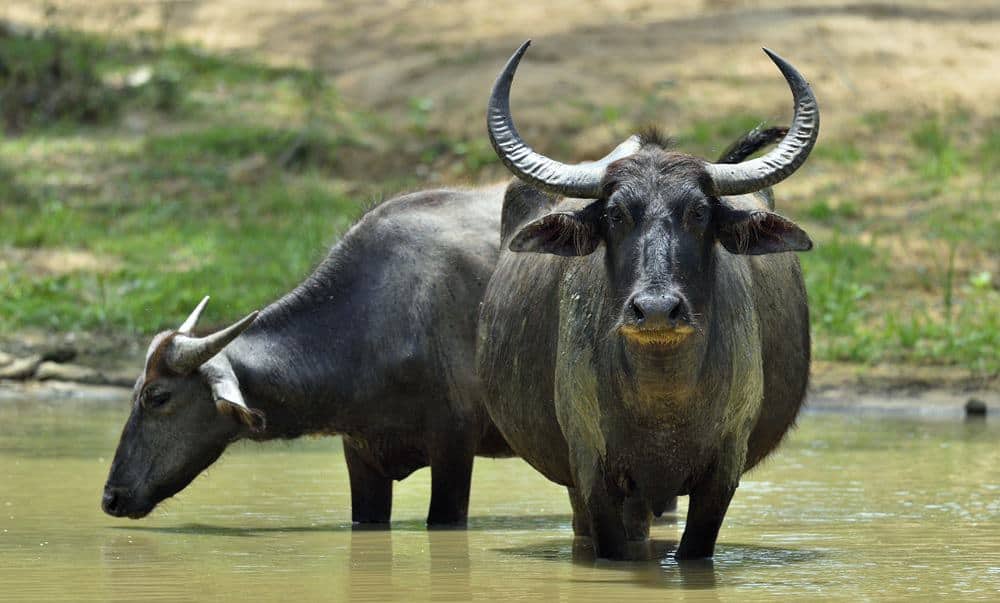
Weighing in at up to 2,650 pounds (about 1,200 kilograms), the Water Buffalo is the second strongest animal. It has a massive build and the ability to adapt and thrive in varied aquatic and land habitats. They are particularly adept at plowing through wetlands and muddy terrains. Water Buffalo have a gentle nature, often seen in their interactions with humans, belying the immense strength and resilience they possess.
3. Cape Buffalo
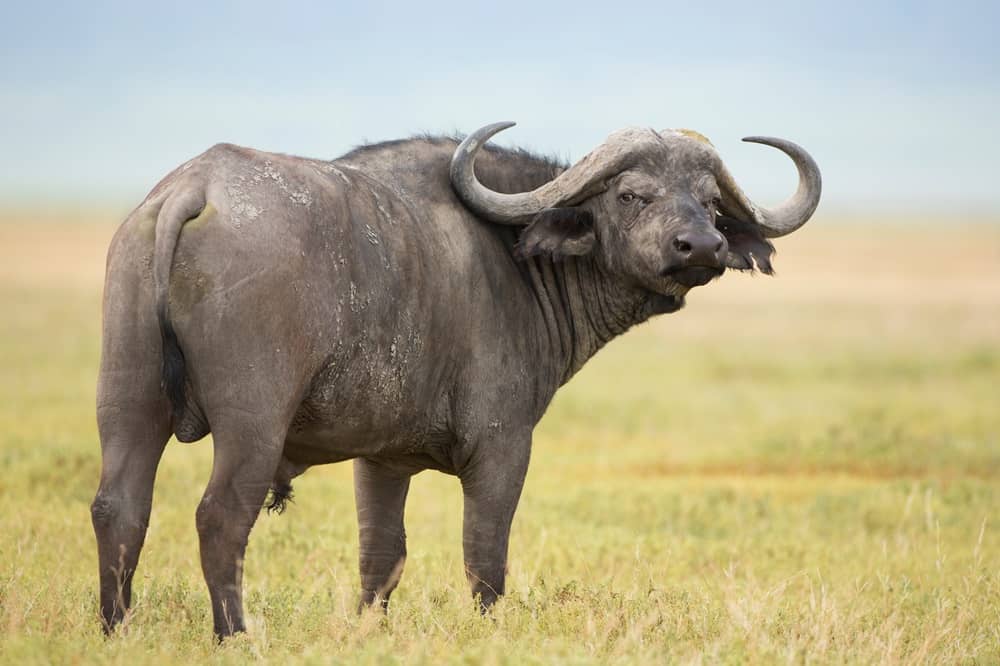
The Cape Buffalo commands respect in the African wilderness. With a robust frame and massive horns, these animals are not just strong but also incredibly resilient. Weighing up to 2,000 pounds (about 900 kilograms), the Cape Buffalo’s strength isn’t just in its size. These animals are known for their protective nature, especially when safeguarding their young or defending the herd against predators.
4. Musk Ox
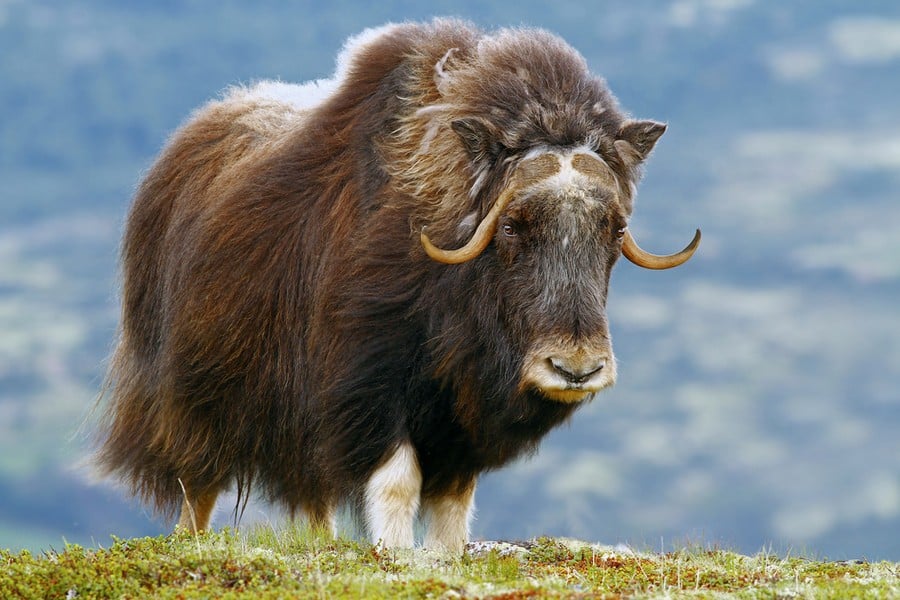
Weighing up to 900 pounds (410 kilograms), the Musk Ox is a rugged beast that lives in the Arctic tundra. They have a shaggy coat, imposing horns, and thick muscle on their neck and shoulders. Their hooves are so strong that they can break through solid ice to get to the water below. And they have been used for centuries to pull heavy carts across rugged terrain. Their thick coat is one of the densest in the animal kingdom, providing insulation in extreme cold. They have few natural predators, including wolves, polar bears and grizzly bears.
5. Bison
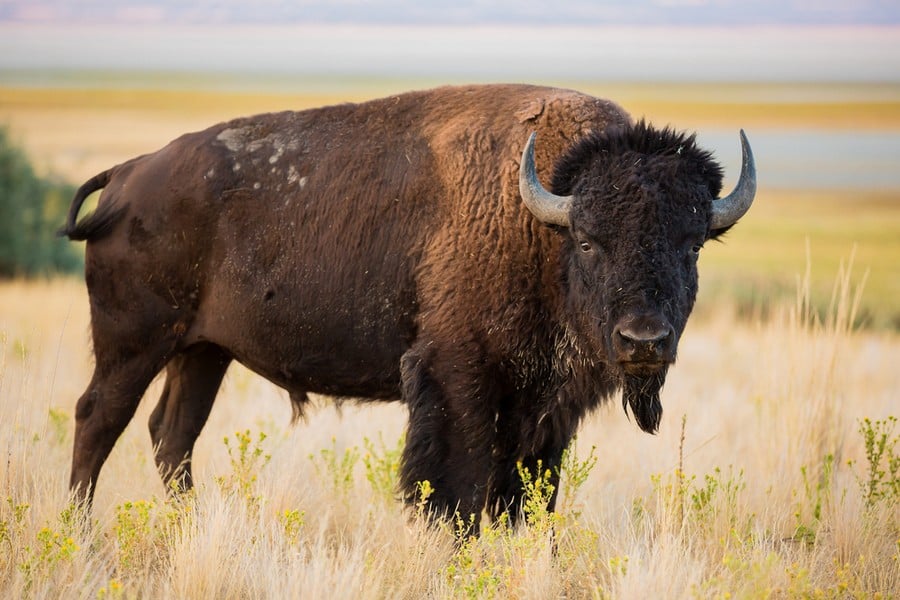
The Bison, often referred to as the American Buffalo, is the largest animal indigenous to North America. They are massive, with bulls weighing up to 2,000 pounds (900 kilograms). Their muscular build is particularly notable in their humped shoulders. They can run outrun a horse for a quarter mile and are capable of jumping high fences. Their strength is also apparent in their ability to plow through heavy snow and move obstacles in their path.
6. Ox
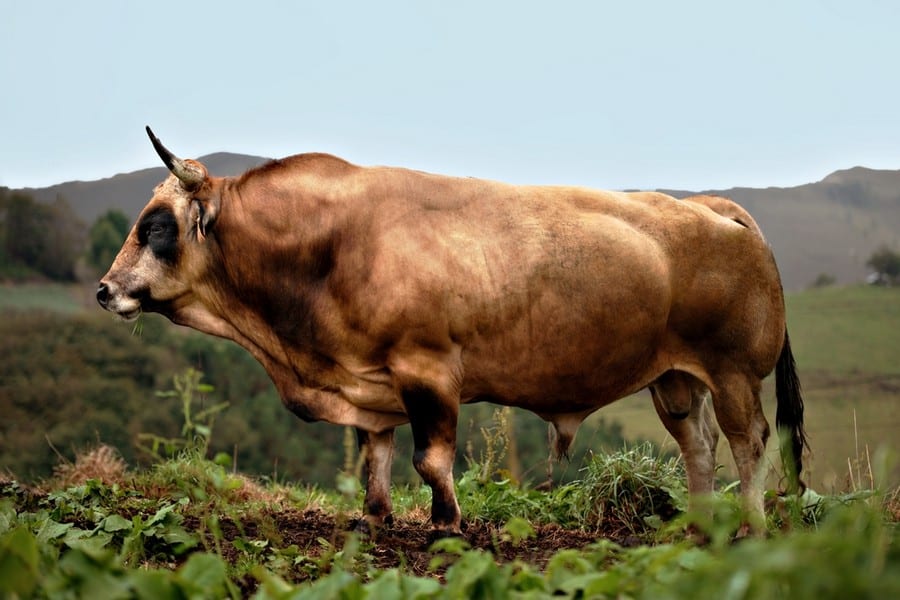
Oxen are the domesticated counterparts of wild bovines. Typically, oxen can weigh up to 2,800 pounds (1,270 kilograms). The true strength of an ox lies in its endurance and ability to sustain effort over long periods. They are capable of pulling heavy loads, often more than their own body weight, across various terrains. The muscle composition of an ox is suited for heavy labor given its higher proportion of slow-twitch muscle fibers.
7. Gorilla
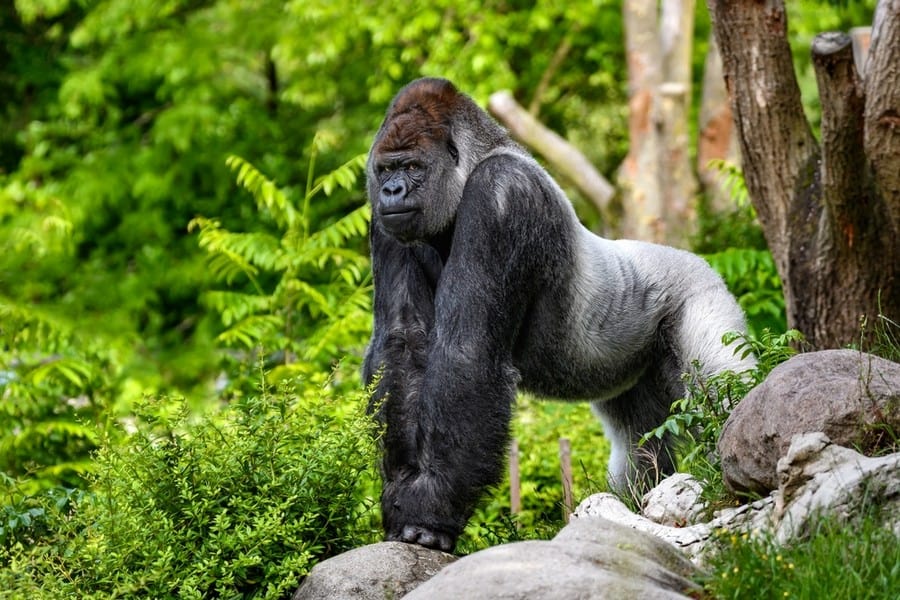
Gorillas, particularly the Silverback, are poster childs for strength and dominance. Weighing up to 440 pounds (200 kilograms), these primates are able to lift, carry, and throw objects up to and sometimes over (1,800 pounds) 815 kilograms. This is about 10 times their body weight, which is a conservative estimate. Their muscular arms, which are much stronger than their legs, can break bamboo, and bend and snap heavy branches.
8. Rhinoceros
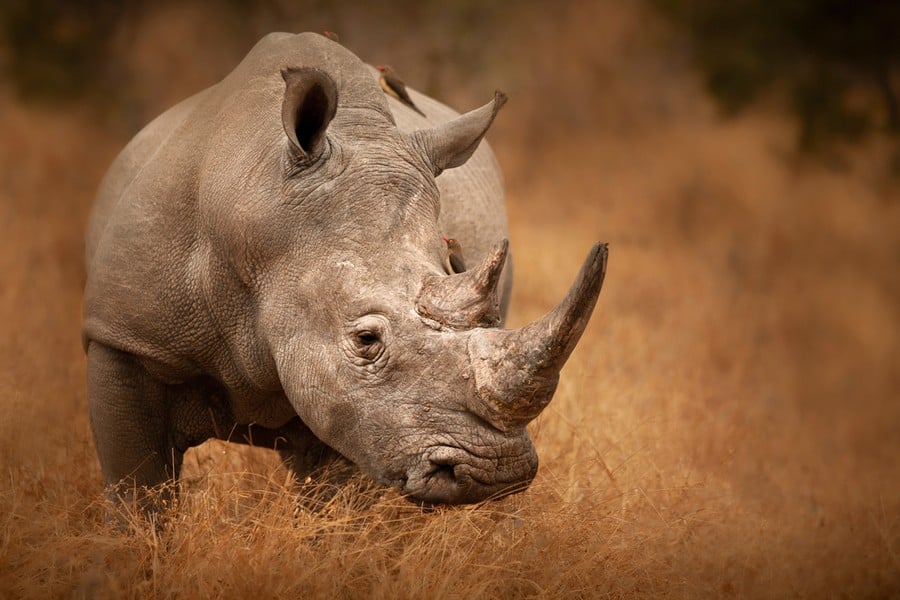
Rhinoceroses, with their armor-like skin and massive size, are tough creatures. An adult white rhino can weigh over 5,300 pounds (2,400 kilograms). Their strength is evident in their ability to charge at speeds of up to 31 miles per hour (50 kilometers per hour), breaking through obstacles with ease. Rhinos are among the mightiest land mammals in terms of raw physical strength.
9. Tiger
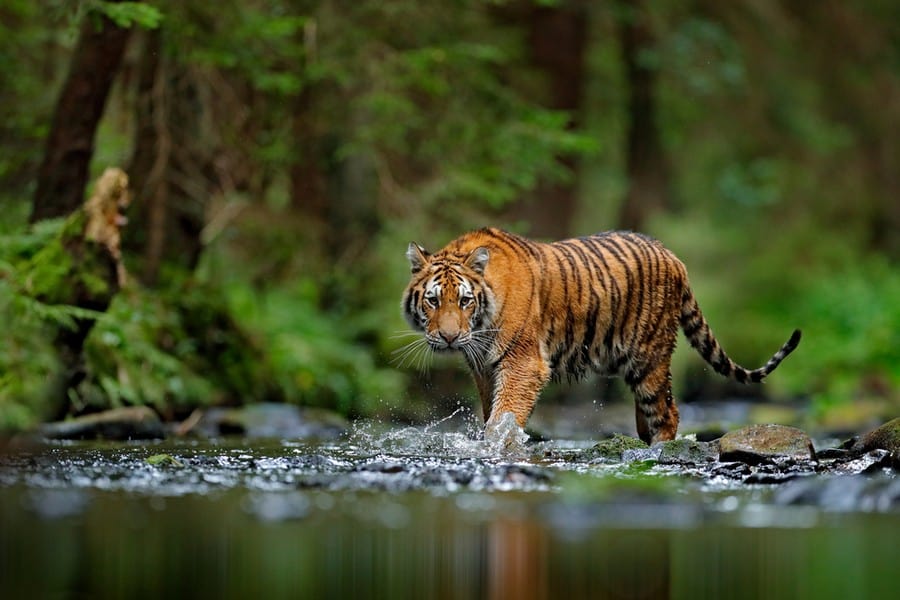
The Tiger combines strength with agility. Tigers can weigh up to 660 pounds (300 kilograms) and are capable of taking down prey much larger than themselves, including buffalo and deer. Their muscular build facilitates incredible leaps and sprints, making them talented hunters. Their hunting prowess is not just about strength but also stealth. Their striped coats provide perfect camouflage in the dappled light of the forest.
10. Polar Bear
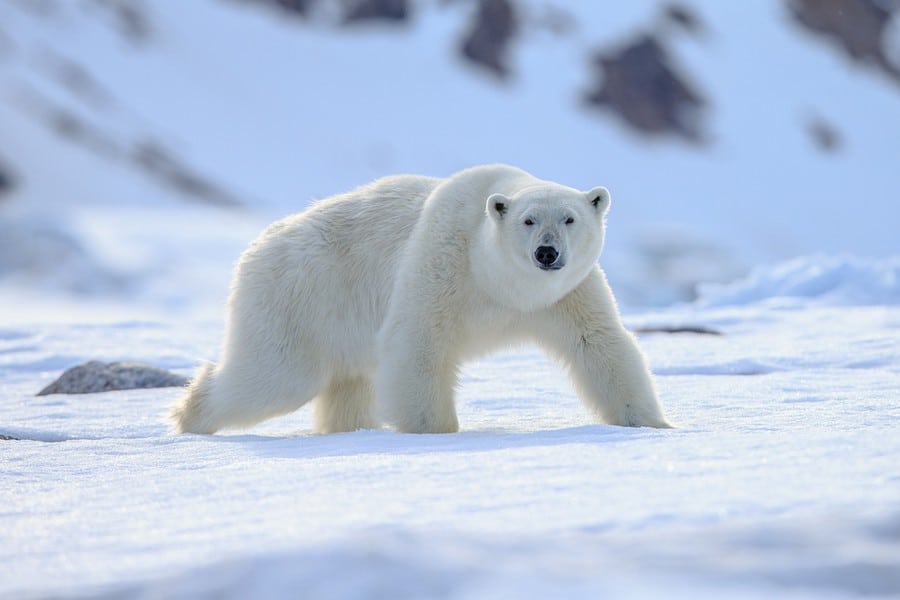
The Polar Bear is the largest carnivore on land. An adult male can weigh up to 1,800 pounds (800 kilograms) and measures up to 10 feet (3 meters) in length. Their strength is pivotal in hunting, allowing them to break through thick ice to access seals. Their powerful limbs enable them to swim for miles, often navigating treacherous icy waters with ease. Polar Bears are the apex predators in their habitat, and one of the most dangerous animals in the world.
11. Grizzly Bear
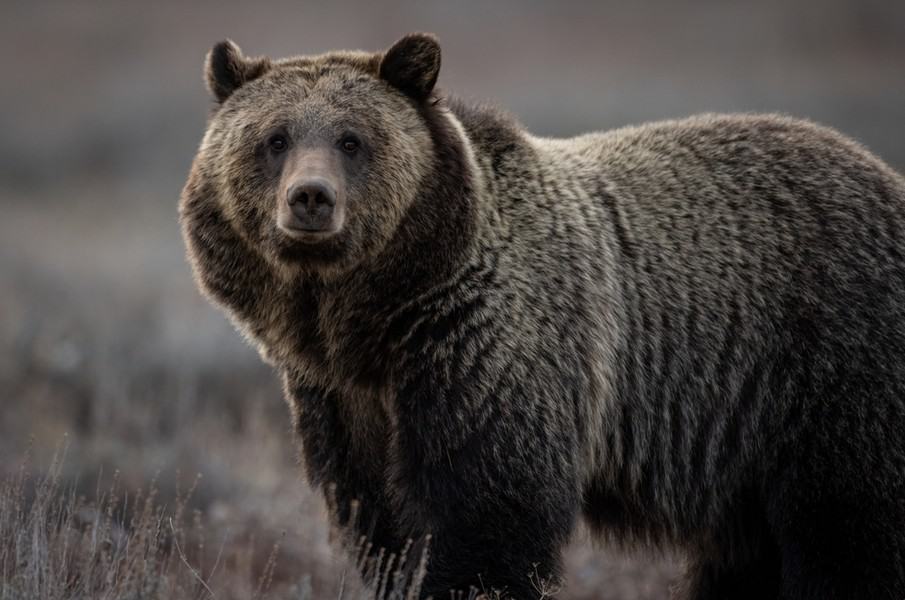
The Grizzly Bear is a symbol of raw power and ferocity. Adult grizzlies can weigh up to 1,500 pounds (680 kilograms) and possess a bite force of around 1,200 pounds per square inch. Their massive size is complemented by a dense muscle mass, especially around their shoulders and neck. Grizzlies can dig up earth, roots, and small trees with ease, thanks to their powerful forelimbs and long claws.
12. Hippopotamus
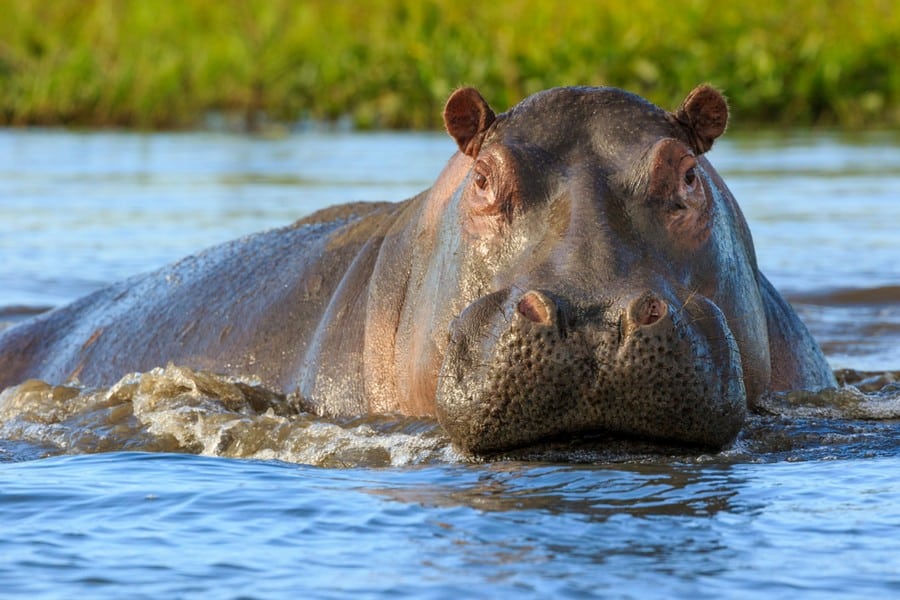
Despite their round appearance, hippos are incredibly strong. An adult hippopotamus can weigh up to 7,000 pounds (3,200 kilograms). Hippos have one of the most powerful bites among mammals, with a bite force estimated at about 1,800 pounds per square inch. Their jaws can snap a canoe in half, and they have been known to charge boats. Hippos are highly territorial, and use their mass to protect their space in the water and on land. They’re one of the most dangerous animals in Africa.
THE SMALL BUT MIGHTY ANIMALS
Shifting gears, let’s explore strength from a different angle: the strength-to-size ratio. This perspective gives us insights into some unexpectedly mighty creatures.
1. Dung Beetle
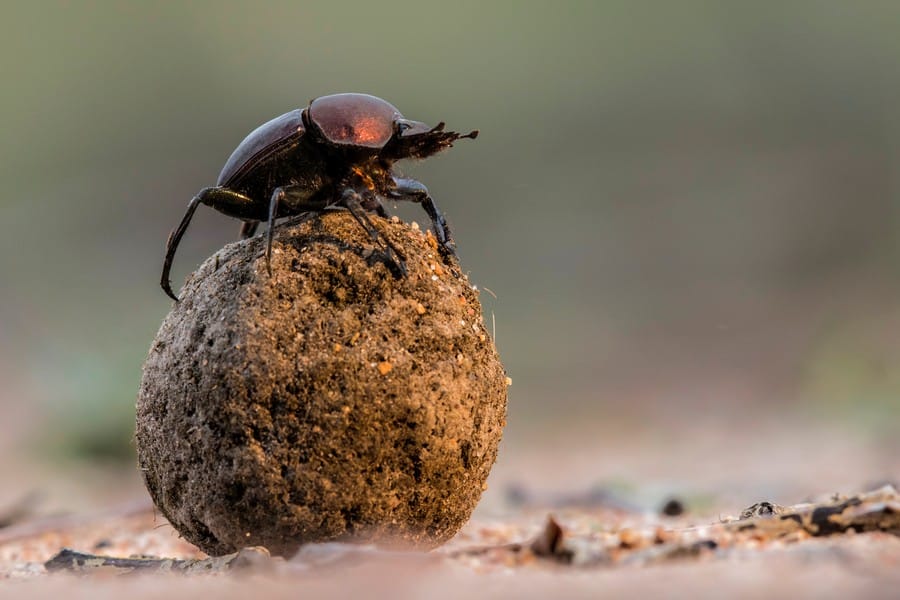
The Dung Beetle might seem an unlikely candidate for one of the strongest animals, but when it comes to strength relative to body size, they are unparalleled champions. These tiny insects can pull objects over 1,000 times their body weight, equivalent to a human lifting about 80 tons! This incredible feat is a matter of survival, as dung beetles rely on rolling dung balls for food and reproduction.
2. Rhinoceros Beetle
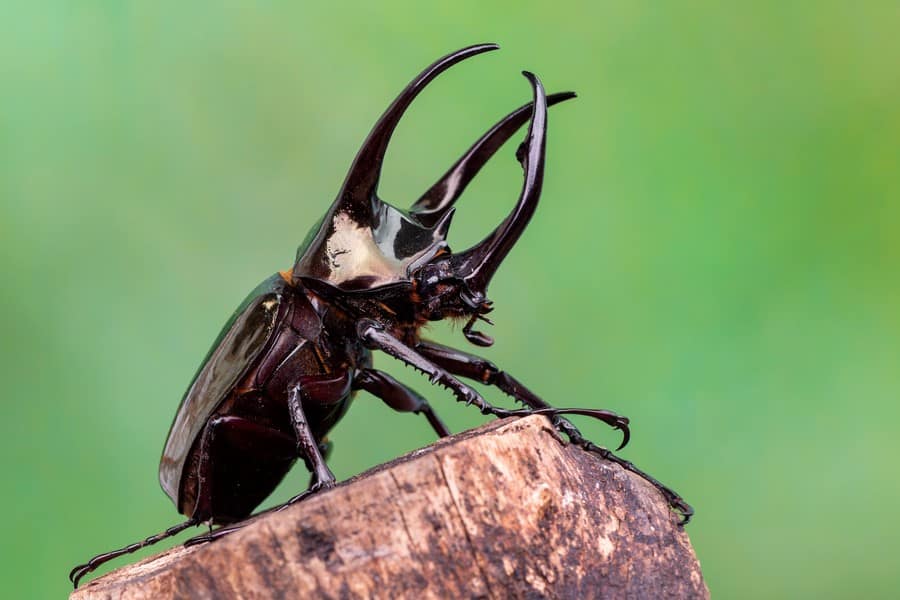
Rhinoceros Beetles also have an impressive strength-to-size ratio. They can reach up to 7 inches (173 mm) in length, making them the longest species of beetle in the world. Rhinoceros beetles can carry objects up to 850 times their own body weight. This incredible strength, akin to a human lifting nine adult elephants, is used in battles over mates and territory. They have a robust exoskeleton and strong, muscular structure, especially in its thorax and front legs.
3. Leafcutter Ant

Finally, we have the miniature marvel of the Leafcutter Ant. These ants can carry leaves and other materials up to 50 times their body weight. This is akin to a human carrying a small car over their head! The Leafcutter Ant’s strength is essential for gathering food and maintaining their complex, subterranean colonies.



















































